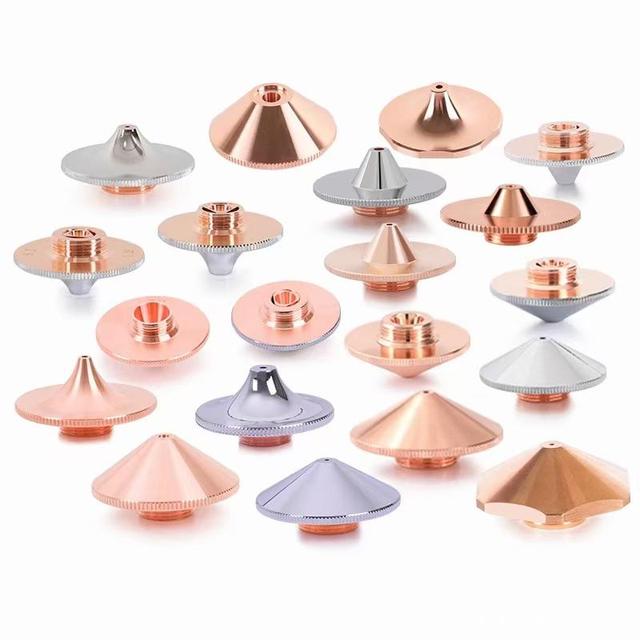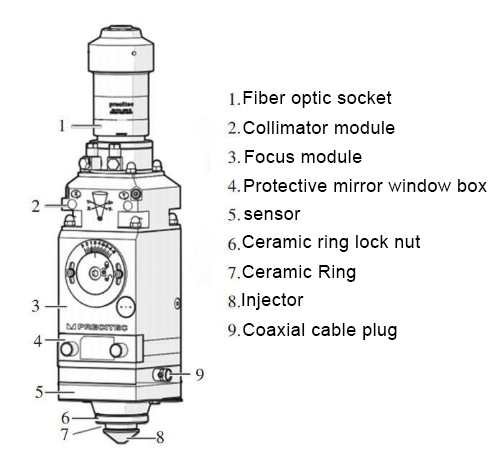
Vulnerable parts of laser cutting machine | Ceramic ring
As is well known, the vulnerable parts on laser cutting machines include ceramic rings, nozzles, reflectors, focusing mirrors, and protective mirrors. Next, we will elaborate on the structure of these vulnerable parts and how they should be replaced.

The ceramic ring is installed on the laser cutting head above the nozzle and below the sensor (as shown in the picture above), responsible for transmitting and collecting the cutting signals emitted by the nozzle to prevent the nozzle from colliding with the plate during operation and damaging other valuable parts of the cutting head. It also has the function of high temperature resistance and deformation prevention.

The common structure of ceramic rings is shown in the figure, which mainly includes: ceramic body, stainless steel sheet, and copper column. There are two commonly used raw materials for ceramic bodies, namely zirconia and alumina. Just by the name, one can tell that zirconia is more expensive than alumina. The advantage of using zirconia as a ceramic ring is that it has a very small coefficient of thermal expansion (high temperature resistance), high density (drop and wear resistance), and high electrical resistivity. This type of ceramic body can effectively ensure the insulation between important components and cutting heads, further reducing the loss of cutting heads. Of course, it is reasonable to use alumina to reduce costs, but the replacement cycle for vulnerable parts will also be shortened.
As we all know, “stainless steel sheets” are generally used for transmission purposes in metals. The large area of stainless steel sheet in full contact with the nozzle can accurately and quickly transmit electrical signals to the copper needle. To minimize high-temperature deformation of thinner stainless steel sheets, it also requires many steps of processing. If not handled properly, the stainless steel will deform and affect its use.
The copper column serves as a medium to relay the electrical signals collected from the stainless steel sheet to the internal transmission line of the laser head, ensuring that the controller can adapt to changing circumstances. The propagation of electrical signals requires high conductivity, so gold plating is an effective method.
In addition, attention should also be paid to the adhesive – conductive silver glue, which can effectively and stably bond the three parts, prevent them from falling apart at high temperatures, ensure the overall conductivity, and ensure the safe operation of the laser head. Good ceramics will hardly affect the original laser path after replacement, and there is no need to readjust, saving time and effort.
- How to replace ceramic rings

To replace the ceramic ring, first unscrew the nozzle, and then unscrew the locking nut of the ceramic ring. During the rotation, be sure to hold your fingers against the old ceramic ring to prevent it from slipping vertically and falling off. When replacing a new ceramic ring, it is necessary to align the copper column with the sensing hole at the bottom of the cutting head. A properly aligned ceramic ring is horizontal and has some elasticity, making it unable to rotate left or right. Then press your fingers against the ceramic ring sleeve to tighten the locking nut, and finally screw the nozzle on to complete the installation. At the same time, after installation, it is necessary to debug the beam path to prevent light deviation.